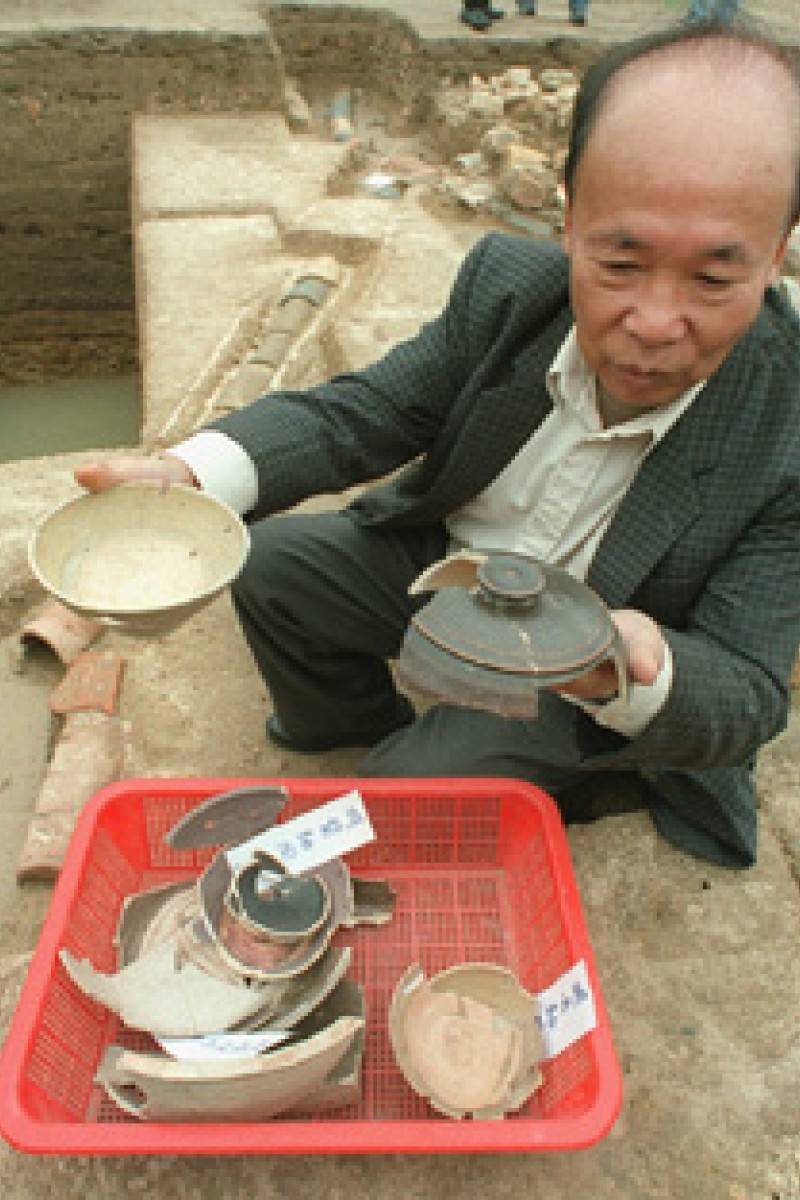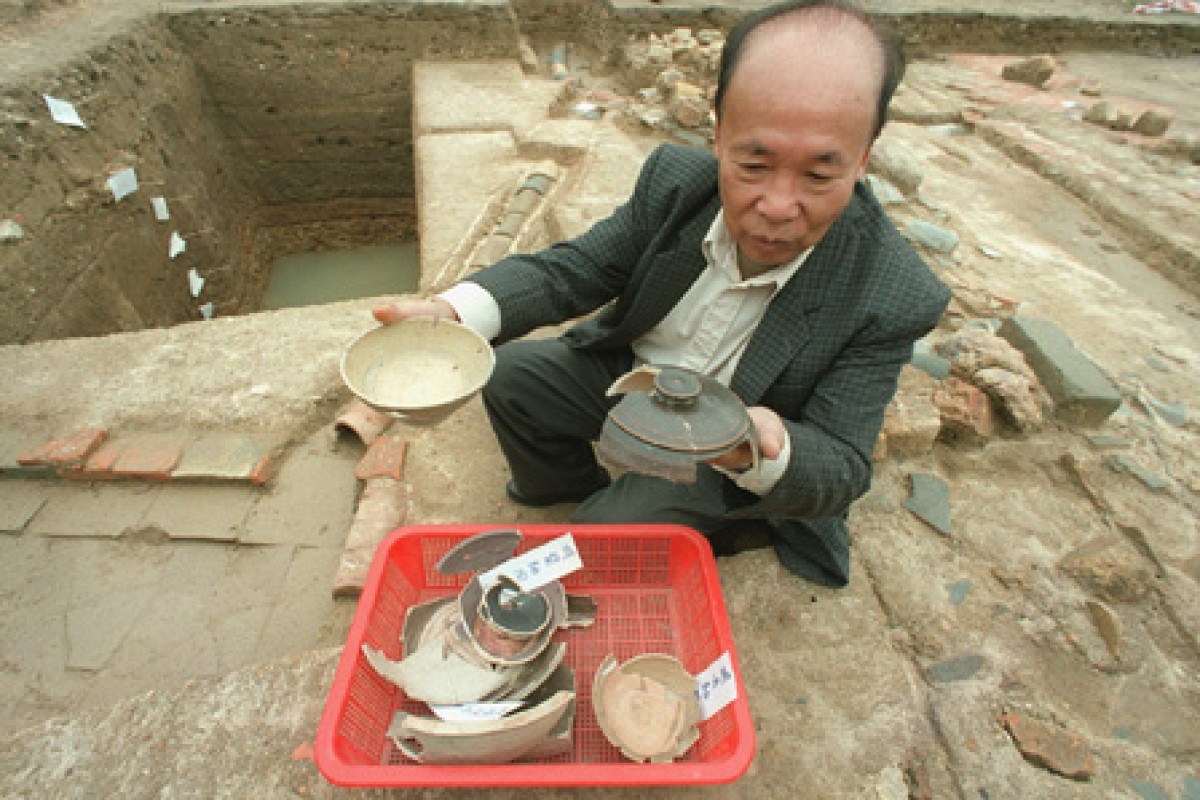
Relentless development in Hong Kong is helping to uncover traces of our ancestors' lives
 Mo Zhi, of the Hong Kong Archaeological Society, with artefacts found at Mong Tseng Wai in 2001.
Mo Zhi, of the Hong Kong Archaeological Society, with artefacts found at Mong Tseng Wai in 2001.Yet this is not the first time artefacts have been found in Hong Kong. As the relentless bulldozers and cranes continue to transform our city's skyline, ever more discoveries are being made.
Here Young Post looks at four surprising finds of the past decade.
2001: Song dynasty house, complete with drainage system
Farmland in Mong Tseng Wai, in Yuen Long, yielded two first-time discoveries for archaeologists.
During the dig, scientists unearthed six collapsed houses lying next to one another. One of the properties, dating back to the Song dynasty (960-1279), even featured a well-preserved and sophisticated drainage system, red floor tiles plus an air shaft. It was the first housing from the era found in the Guangdong region, but experts suspect there are more hidden properties beneath developments.
The excavation also uncovered hundreds of artefacts - including ceramic pieces, coins and tools - from the Tang (618-907), Song and Ming (1368-1644) dynasties.
The site was remarkable because archaeologists had never found traces of dwellings from more than two dynasties in the same place. Generations of settlers might have chosen the area owing to its location - facing south with mountains behind and close to a water source.
2002: Neolithic and Bronze Age stone tools
Hong Kong's most comprehensive early human settlement was found in Sha Ha, Sai Kung. Up to 60 archaeologists spent a year brushing all the soil off discoveries in the 3,600sq m site.
Major finds from both the Neolithic and Bronze Ages included stone tools, pottery, adzes (wood-carving tools) and graves from a period spanning more than 4,000years. Post holes were found showing where wooden posts were erected to build stilted homes.
Experts said the discoveries would help to show not only the chronology of local archaeological cultures, but also offer a full picture of how society developed in the Pearl River Delta region. It is still unknown whether the settlement was used as a permanent residency or as a base for hunting and gathering.
2004: Han dynasty kiln fragments in Mong Kok
A batch of 2,000-year-old relics shocked drainage workers and archaeologists when they showed up in a smelly trench on the corner of Soy and Tung Choi Streets. Workers were upgrading underground sewage pipes when they came upon an ancient pot. They put aside their duties to help sift through reddish soil manually.
The excavation uncovered fragments of a Tang dynasty kiln, some Jin dynasty (1115-1234) pots and a Han dynasty (206BC-220AD) cauldron. Many were so bitty they are barely distinguishable from the earth.
Archaeologists believe the finds could help prove that Mong Kok, now a bustling shoppers' paradise, could have been a major centre for either lime or ceramic production centuries ago. The well-preserved Jin dynasty specimens were thought to be burial objects.
2006: 36,000-year-old stone tools in Sai Kung
It had been thought that Hong Kong's history dated back only about 6,000years, but a cache of ancient tools showed the first settlers were here 30,000 years earlier.
Two archaeologists hiking and fishing near Wong Tei Tung, in eastern Sai Kung, discovered interesting stones on a beach. Later more than 3,000 stone fragments - primitive stone tools - were found. Such instruments were made of high-quality materials that were never before found in Hong Kong or southern China.
Prehistoric man made such tools by smashing stones together until sharp-edged fragments chipped off. The most common tools were hand axes used for cutting and chopping.
